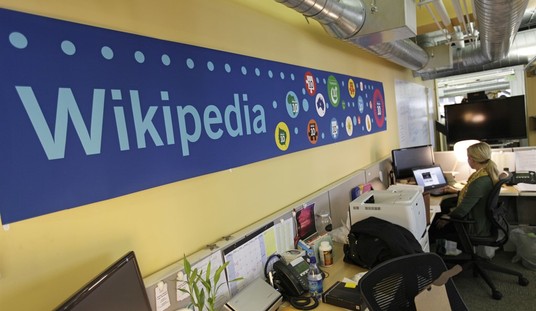As expected, the US economy slowed even further in the second quarter. After posting an anemic 1.9% in the first quarter, the Commerce Department announced that the estimate for annualized second-quarter growth came in significantly below that at 1.3%. Real final sales of domestic product improved, however:
Real gross domestic product — the output of goods and services produced by labor and property located in the United States — increased at an annual rate of 1.3 percent in the second quarter of 2011, (that is, from the first quarter to the second quarter), according to the “advance” estimate released by the Bureau of Economic Analysis. In the first quarter, real GDP increased 0.4 percent.
The Bureau emphasized that the second-quarter advance estimate released today is based on source data that are incomplete or subject to further revision by the source agency (see the box on page 3). The “second” estimate for the second quarter, based on more complete data, will be released on August 26, 2011.
There isn’t a lot of good news in this report, but the real final sales number might be one less-dim spot in a dark result. In Q1, that number only came to 0.6%, which meant that most of the growth in the first quarter came in inventory growth. In this preliminary report, that figure comes in at 1.1%, which means that most of the Q2 growth came from actual final sales rather than inventory adjustments. That could portend a better alignment of just-in-time purchasing to demand, which would be great news if demand had picked up instead of slacked off.
Reuters, of course, got surprised by the news:
The economy grew less than expected in the second quarter as consumer spending barely rose amid higher gasoline prices, and growth braked sharply in the prior quarter, a government report showed on Friday.
Growth in gross domestic product — a measure of all goods and services produced within U.S. borders – rose at a 1.3 percent annual rate, the Commerce Department said. First-quarter output was sharply revised down to a 0.4 percent pace from 1.9 percent.
Economists had expected the economy to expand at a 1.8 percent rate in the second quarter.
Really? Really? Durable goods orders tanked April and June, losing more than 2% in each month, while May only saw an increase of 1.9%. Imports increased in the final month, too, which push downward on GDP growth. Frankly, I’m surprised that the Q2 number came in as high as it did; I was guessing a positive number below 1%. I’d bet on the next two planned restatements in August and September being downward rather than upward revisions.
Consumer spending remains weak. Gross domestic purchases only increased 0.7%, the same as in Q1, despite less pressure from gas prices in Q2. Personal income rose at half the level as Q1 (4.2% to 8.3%), while real personal disposable income only rose 0.7%, again the same as Q1. Personal outlays slacked off, too, increasing only 3.1% compared to Q1’s 5.8%, but the personal savings rate edged upward to 5.1%, from 4.9% in Q1.
We can expect this to make employers even more leery about adding jobs in the next couple of months, regardless of the debt ceiling resolution. This will show further the damaging effects of Obamanomics and the expansion of the regulatory state, especially at a time of high unemployment.
Update: The AP doesn’t pull any punches, calling this the weakest quarter since the recession officially ended in June 2009:
The economy expanded at meager rate of 1.3 percent annual rate in the spring after scarcely growing at all in the first three months of the year, the Commerce Department said Friday.
The combined growth for the first six months of the year was the weakest since the recession ended. The government revised the January-March figures to show just 0.4 percent growth — down sharply from its previous estimate of 1.9 percent. …
The sharp slowdown means the economy this year will likely grow at a weaker pace than last year. And economists don’t expect growth to pick up enough in the second half of the year to lower the unemployment rate, which rose to 9.2 percent last month.
In fact, we might start seeing net job losses again at this level of “growth.”
Addendum: One e-mailer wondered who declared the recession over in the first place. Recessions end when GDP growth gets into positive territory; it’s a technical definition, not a qualitative expression of economic vigor.
Update II: I was concentrating so hard on the topline number and the components in Q2 that I missed this statement in the first paragraph:
In the first quarter, real GDP increased 0.4 percent.
The last revision showed it at 1.9%, which is one hell of a downward revision. It wasn’t the only downward revision, either; 2008Q4 got revised downward to -8.9%. How did the Q1 number get revised so sharply downward?
Update III: One commenter said that the 0.4% was an increase in Q1’s GDP, not the Q1 GDP number itself. That’s incorrect. GDP numbers are always given as the annualized difference from one quarter to another, in chained dollars (at the moment, 2005 dollars). If anyone doubts that the Q1 number got changed from 1.9% t0 0.4%, just download the Excel spreadsheet showing the historical estimates and look for the 2011Q1 chained-dollar figure; it’s 0.4%.








Join the conversation as a VIP Member